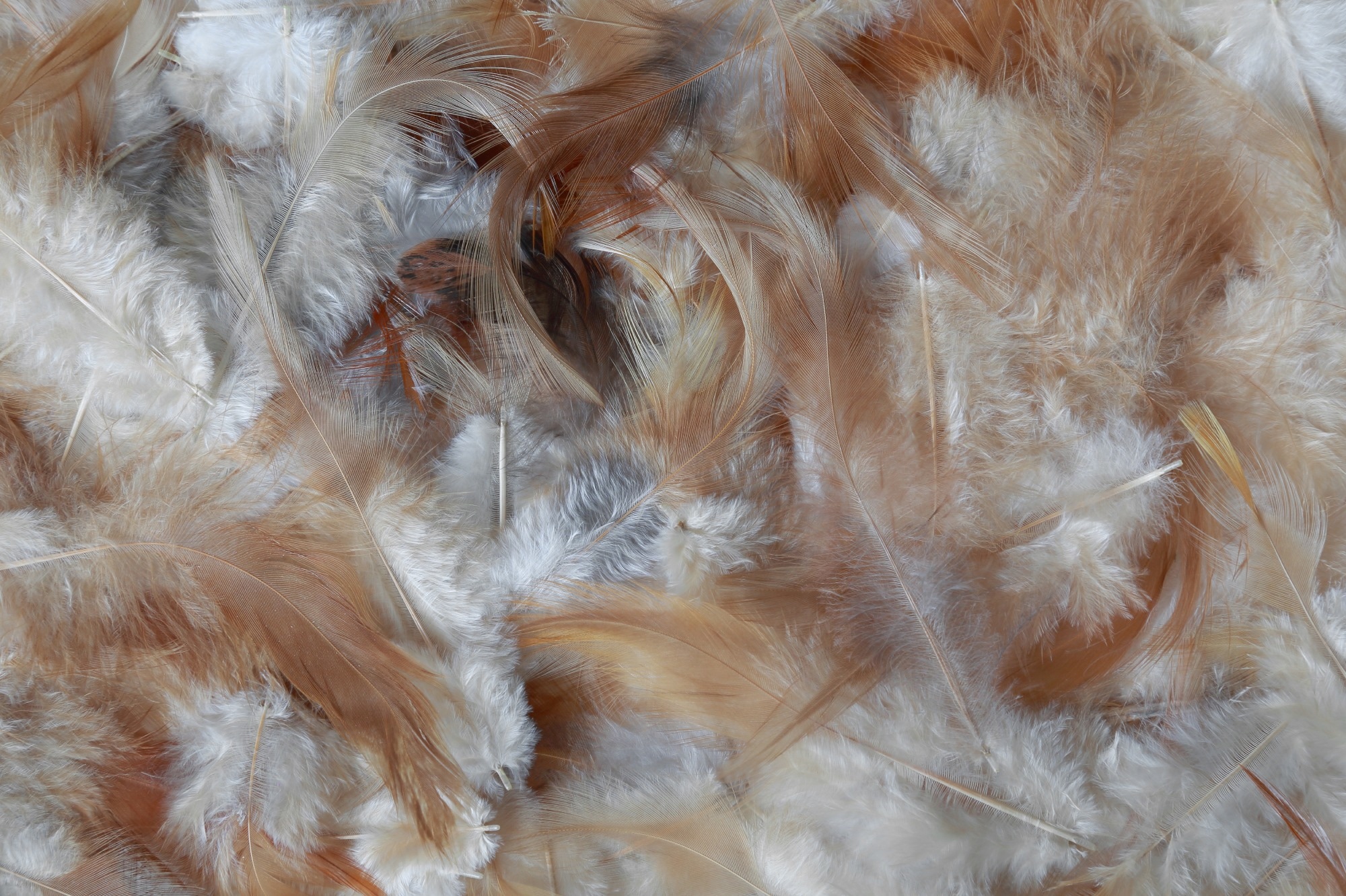Each year, the global poultry industry produces 40 million tons of chicken feathers, a significant waste product. While these feathers have little use in an industry primarily focused on meat production, a breakthrough from a collaborative research team at ETH Zurich and Nanyang Technological University Singapore (NTU) offers a promising solution.

Image Credit: Jelena Aloskina/Shutterstock.com
They have discovered an innovative way to repurpose chicken feathers by extracting the valuable keratin protein and transforming it into ultra-fine amyloid fibrils. These keratin fibrils can be used in fuel cell membranes, offering a novel application for what was once discarded.
Currently, burning waste feathers introduces a multitude of pollutants into the atmosphere. This combustion releases air pollutants, including particulate matter, volatile organic compounds (VOCs), and nitrogen oxides, all of which contribute to smog and adversely affect human and animal health. Additionally, the process emits greenhouse gases, accelerating global warming and climate change. The combustion can also produce toxic substances like dioxins and furans, presenting further health and environmental hazards. Moreover, the energy typically utilized for this burning often originates from non-renewable sources, amplifying the overall environmental toll.
With this new research, there is potential to transform a major waste product into a valuable resource while mitigating environmental harm.
A Sustainable Solution From Waste Feathers
Fuel cells produce CO2 emission-free electricity by harnessing the chemical reaction between hydrogen and oxygen, producing non-toxic byproducts only—water and heat. Fuel cells, therefore, hold great promise as a sustainable energy solution that will help meet the world’s growing energy demands.
The semi-permeable membrane is key to the function of the fuel cell. It is this component that permits the passage of protons through the cell and compels electrons to move around the path of the external circuit from the negatively charged anode to the positively charged cathode. This process generates electricity.
Conventionally, fuel cell membranes are produced using a range of hazardous chemicals, often termed "forever chemicals." However, scientists from ETH and NTU have pioneered a method that leverages biologically sourced keratin, such as that from chicken feathers, as an alternative to these detrimental chemicals. The resulting membrane is not only more environmentally friendly but also up to three times less expensive to produce than traditional counterparts.
By adopting this process, the carbon footprint of the poultry industry could be reduced, as could that of fuel cell manufacturing.
The Importance of Fuel Cells in the Clean Energy Future
Fuel cells play a vital role in generating CO2-free electricity from hydrogen, oxygen, and biogas. They also have a low environmental impact as they do not emit harmful pollutants or greenhouse gases.
A key advantage of fuel cells is their role in energy storage. This capability helps renewable energy sources, like solar and wind, navigate the intermittency problem, stepping in when energy demand surpasses supply.
Fuel cells are also incredibly versatile and can be used in a wide range of applications. They can be used in transportation as well as stationary power generation, such as powering homes, businesses, and industries. Their versatility makes fuel cells suitable for reducing the emissions of many sectors.
The increased use of fuel cells will help reduce our dependence on non-renewable energy and enable decentralized power generation. Overall, fuel cells will help the world move towards more sustainable energy consumption.
What is Next?
Next, the researchers plan to assess the stability and longevity of their keratin membrane, making improvements where necessary. Additionally, the team has already begun the process of filing a joint patent for the membrane and is actively seeking potential investors or partners to help advance the technology further and bring it to market.
Overall, the innovation of utilizing chicken feathers in fuel cell manufacture is a step in the right direction towards a clean energy, low-emission future. It simultaneously addresses the need to decarbonize the poultry industry and transform the process of manufacturing fuel cells so that it is more environmentally friendly.
This innovation will likely be one of many needed to help the world continue moving towards its climate goals.
References and Further Reading
- Miserez, A. et al. (2023) Renewable energy from livestock waste valorization:Amyloid-based feather keratin fuel cells [Preprint]. Available at: https://pubs.acs.org/doi/10.1021/acsami.3c10218.
- Tesfaye, T., Sithole, B. and Ramjugernath, D. (2017) ‘Valorisation of chicken feathers: A review on recycling and Recovery Route—current status and future prospects’, Clean Technologies and Environmental Policy, 19(10), pp. 2363–2378. Available at: https://link.springer.com/article/10.1007/s10098-017-1443-9.
- Vanessa Bleich. (2023). Generating clean electricity with chicken feathers [online]. ETH. Available at: https://ethz.ch/en/news-and-events/eth-news/news/2023/10/generating-clean-electricity-with-chicken-feathers.html (Accessed October 2023)
Disclaimer: The views expressed here are those of the author expressed in their private capacity and do not necessarily represent the views of AZoM.com Limited T/A AZoNetwork the owner and operator of this website. This disclaimer forms part of the Terms and conditions of use of this website.